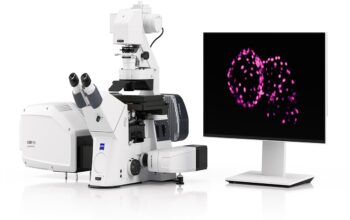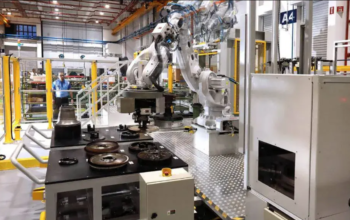Developers and manufacturers in the defense and aerospace industry often describe themselves as suppliers of uncompromising quality for good reason: quality in aerospace and defense applications is often a matter of life and death. Nevertheless, due to the high cost and low volume of production, in most cases, the manufacturing process is heavily based on the human factor.
Workers are engaged in the assembly, integration, and quality processes which are by definition vulnerable to human error.
It is common to observe workers spending up to hours on each part, sub- assembly or system, trying to detect defects visible to the human eye. Due to the extremely high cost of poor quality, companies are investing significant resources in an attempt to reduce and eliminate defects.
“Kitov One has helped us to boost our quality by 25%!”Dr. Yaron Pilie, Rafael

The challenge is not only in the rising cost of labor. In many territories it is difficult and sometimes almost impossible to find qualified workers for the quality inspection positions. The previous generation of skilled workers in visual inspection is aging fast, while the new generation prefers to work in other positions.
Manufacturers in the defense and aerospace industries struggle to adopt automated visual inspection solutions for a number of reasons. Since they produce in relatively small batches with a high mix of products, parts and components, they require a flexible automated solution for testing and inspection. Their need for flexibility, as well as the ability to adapt the inspection process to the dynamic nature of their manufacturing environments, have limited their options with respect to automated visual inspection.
Digitalization and the Industry 4.0 transformation is another driver towards automation in the defense and aerospace industries. In particular, big data analytics technology can be used to make manufacturing processes smarter and more efficient.
KITOV ONE is the only product offering in the market that addresses all of these challenges. Leveraging its superior detection capabilities and its flexible and intuitive setup, KITOV ONE offers defense and aerospace manufacturers the ultimate replacement for manual inspection. KITOV ONE effectively finds all the defects of interest, including those which are often missed by human workers. It can be easily customized to inspect a large variety of products and assemblies by the customer personnel. At the same time, the system generates a gold mine of data that – after applying Kitov’s data analytics – can be used to eliminate future defects and improve quality.
CASE STUDY: AEROSPACE SUB-ASSEMBLIES
A leading Defense and Aerospace company has implemented KITOV ONE for the inspection of complex assemblies, consisting of mechanical and electrical components with over 50 inspection points. KITOV ONE replaced a manual process that was both costly and vulnerable to human error. Implementation of KITOV ONE took less than one month and immediately eliminated the leakage of defects.
Customer Profile:
The customer is a leading, global developer and producer of defense and aerospace technologies. The systems developed by this customer comprise various assemblies and sub-assemblies that are manufactured using a manual assembly process. One of the sub-assemblies which included both mechanical and electronic components, posed a major challenge for the human quality inspectors. Components were extremely small, there were dozens of failure points, and the production batches were small (hundreds or thousands of products) with a high mix of product variants.
Typical defects:
- Missing or disconnected components
- Screw issues: Missing, wrong type, worn screws
- Labels: wrong type, pilling off
- Connector pins: bent, missing, sunk
The Challenge:
Due to the critical nature of the system, there was zero tolerance for even the smallest defects. Typical defects in the sub-assembly included missing or disconnected components, screw issues, wrong or peeling labels, and connector pin issues. Defects missed by human inspectors resulted in unacceptable costs and impacts on the complete system. In addition, long inspection time resulted in human fatigue, which increased the chance of missing defects, inflated operational costs and lessened employee satisfaction. Since all inspection was performed manually, no data was collected and no learning processes could be implemented.
Due to its stringent quality requirements and the need for high level of flexibility, the customer approached Kitov for a smart visual inspection solution.
The Solution
The customer chose KITOV ONE for the following reasons:
- Proven 3D computer vision capabilities that were mandatory for product inspection
- High accuracy in finding critical defects
- Consistency in inspection results
- Ability to record all defects and inspection results and to apply analytics to research failures and root cause analysis
- Continuous improvement process driven by AI algorithms
- Rapid creation of new inspection plans by customer employees only (customer’s defense products are classified)
Implementation
KITOV ONE was delivered, installed and commissioned in less than a month after receiving the customer’s order. By imitating human learning processes, KITOV ONE features an intuitive method to teach the system how to optimally inspect a product, without requiring programming skills or other technical expertise. This allowed the customer-trained engineer to create an inspection plan within a few days.
KITOV ONE became the standard for quality product and a leading tool for identifying defects with the highest levels of accuracy. In fact, the customer used the system for inspection of parts that already passed human inspection and the system found defects that were missed!
Examples of defects detected by Kitov system:




Results and Benefits:
KITOV ONE provided this defense and aerospace manufacturer with concrete benefits:
- High accuracy in detecting defects, enabling the customer to avoid the costs of missed defects
- Record inspection time:
- Less than 30 seconds for sub-assembly (compared to many minutes on manual process)
- Less than 18 seconds for PCBA (compared to one hour on manual process)
- By collecting valuable data, the manufacturer addressed root causes and introduced improvements to the manufacturing process and product design to eliminate future quality issues and facilitate inspection
- Reduced the rate of defects by 25%, also resulting in higher customer satisfaction
- Full records maintained, allowing full traceability and preparation of a database for further investigation
Bottom Line:
KITOV ONE allows the manufacturer to detect and identify all critical defects, resulting in a significant improvement vis-a-vis its previous manual inspection process.
The customer concluded that the ROI on Kitov’s smart visual inspection system was less than one year.
To know more. check Kitov.









